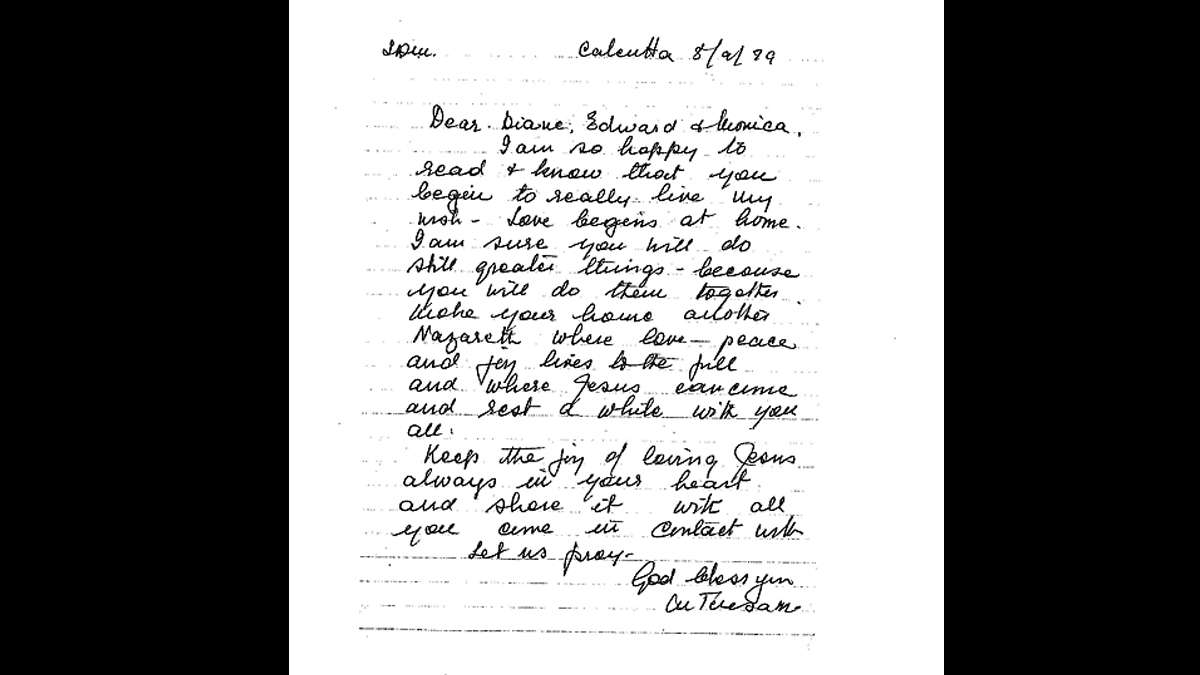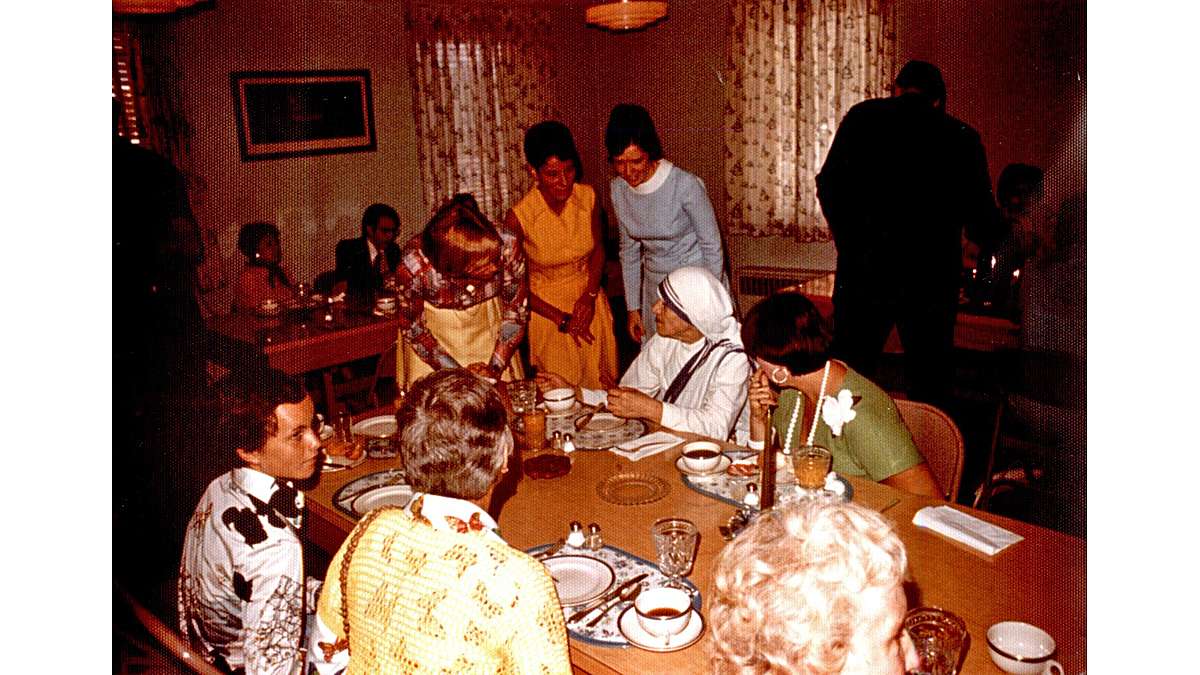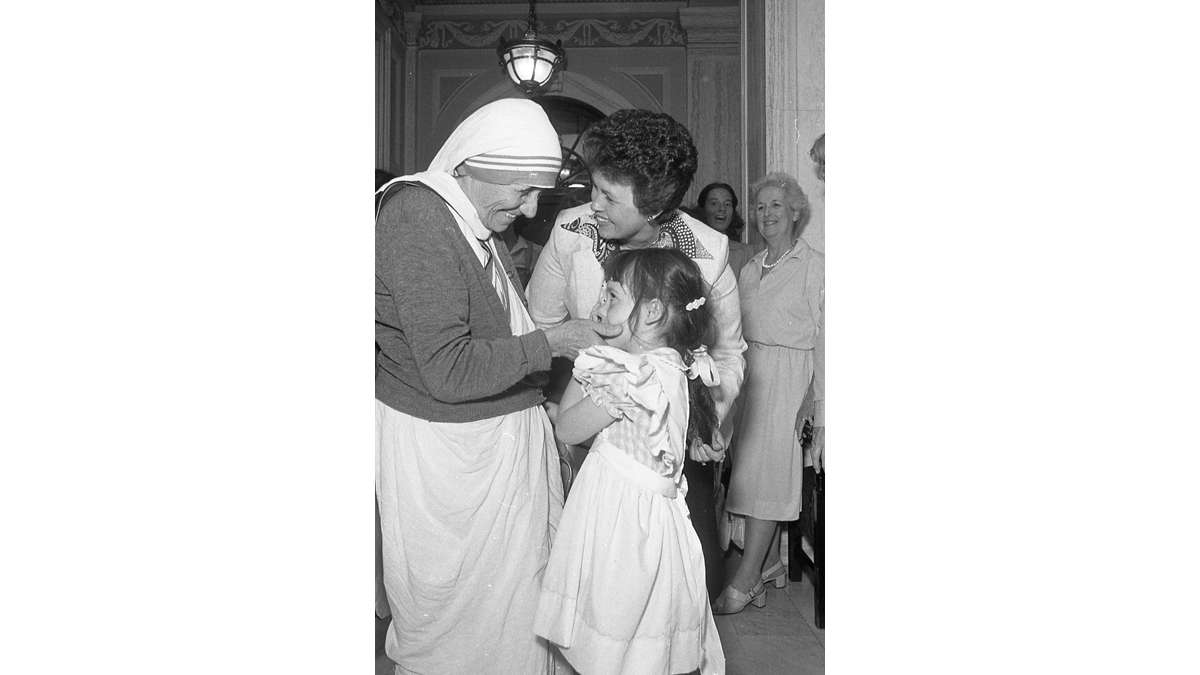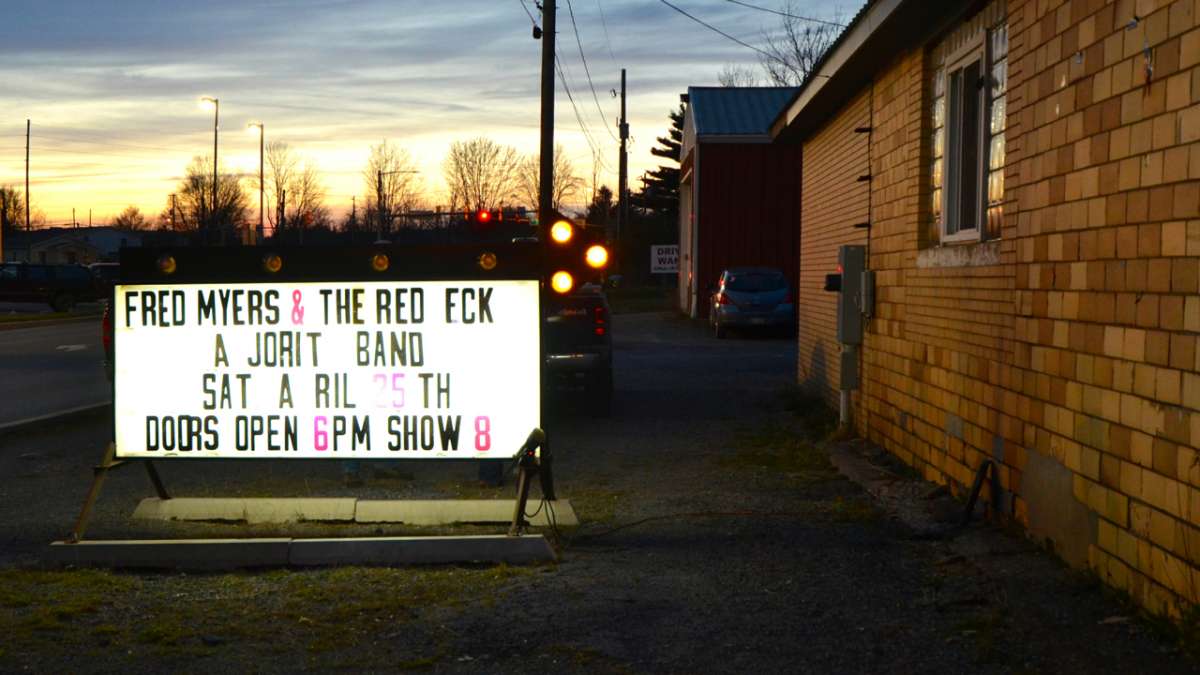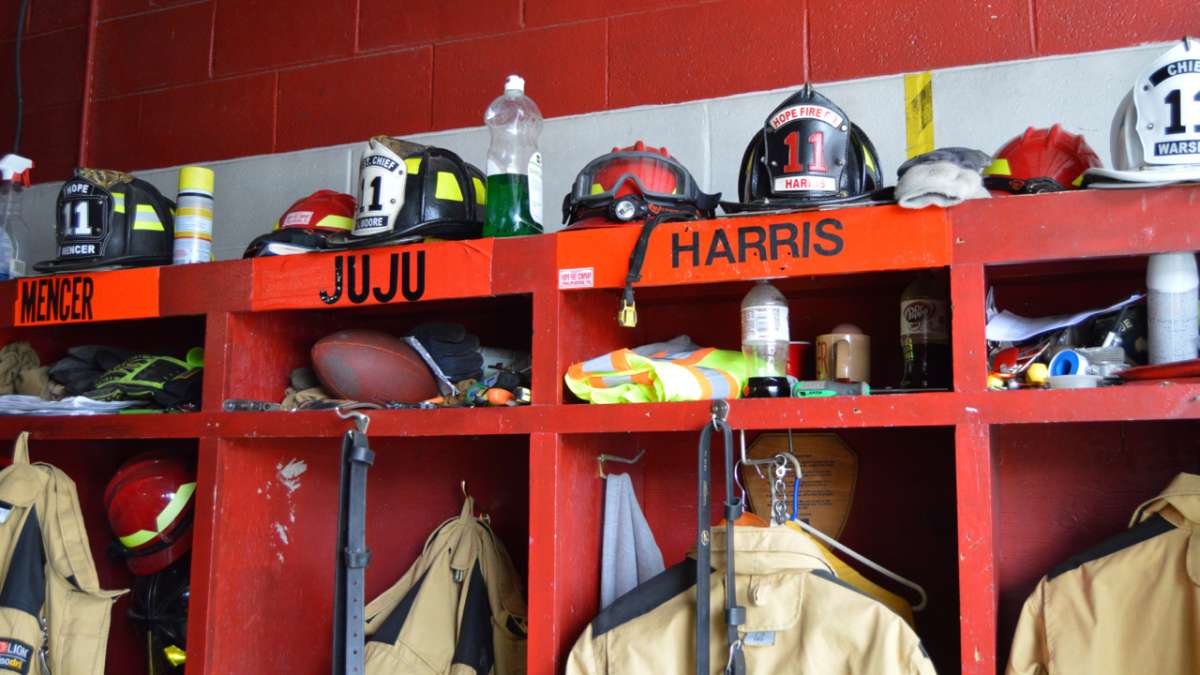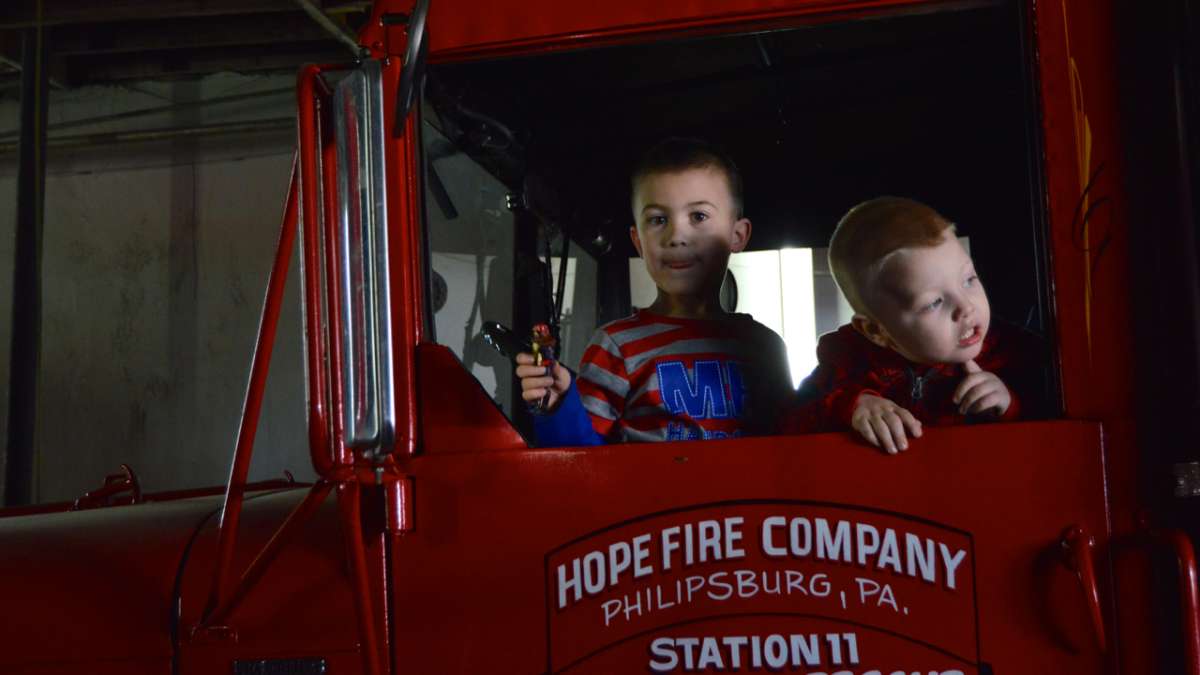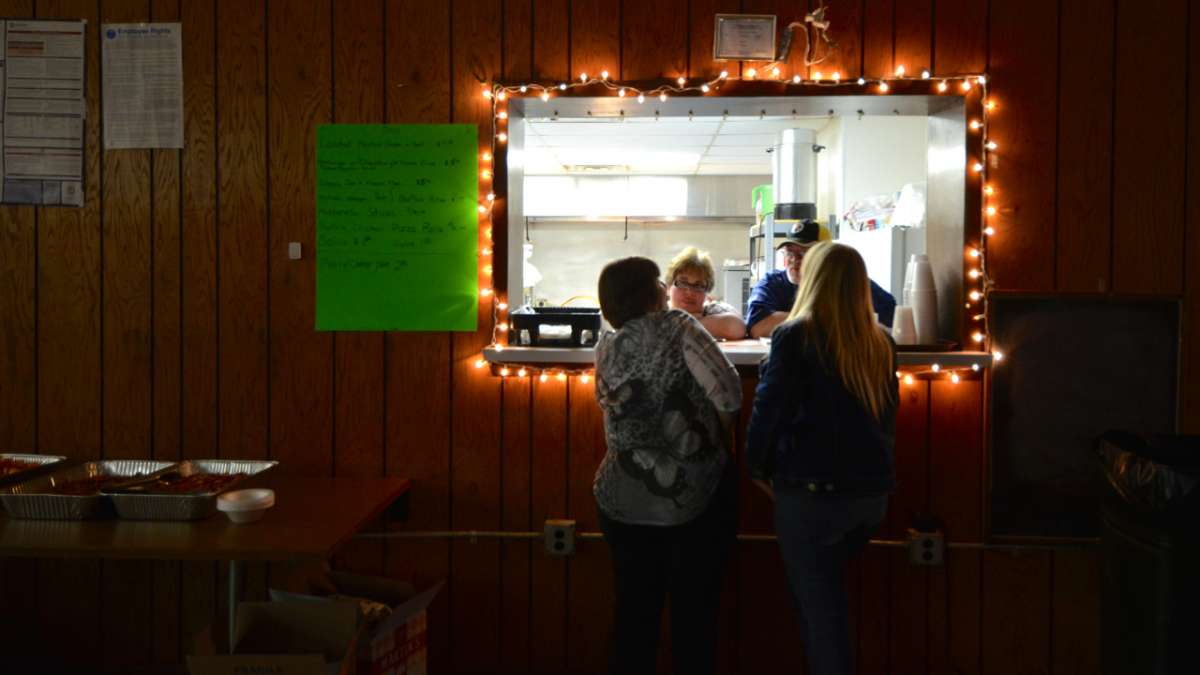Sounding the alarm for volunteer firefighters
ListenVolunteer fire departments in Pennsylvania are hurting for funds and volunteers. But there aren’t easy answers.
The idea of volunteer fire departments originated in Pennsylvania and it’s certainly a hallmark of the state: around 90 percent of Pa.’s fire departments are volunteer. But these departments are facing big challenges. Volunteer numbers are down and for many municipalities, funding is an ongoing headache.
“I wanted to join to fight fires, not to raise money”
If you live in a smaller municipality in Pennsylvania, you probably have a volunteer fire department, which means you’ve probably encountered fire department fundraising events: maybe a carnival, a boot drive, or even a wedding reception at a rented fire hall.
In Philipsburg, the Reliance Fire Company held a dance at the bingo hall recently. Sherry Smith volunteered to cook and sell food. She said she’s there because it’s a good cause — a cause that’s worth community members’ time.
“God forbid, if their house [were] burning down,” she said, “the firefighter company would do everything in their power to make everybody safe.”
It’s the last event to be held at the bingo hall. As a cost-cutting measure, Philipsburg is merging its two fire departments: Reliance Fire Company and Hope Fire Company. Both have been around since the late 1800s. The new department’s name — Philipsburg Fire Department — isn’t quite as poetic as Hope and Reliance, but it’s a move that will save the borough money.
“We get under one roof, we’ll have one bill,” said Jeff Harris, Philipsburg’s fire chief.
He said things have changed in the 36 years he’s been a volunteer firefighter.
“When I first joined, you’d come down and you stood and watched the trucks all go because there was no room for you to get on,” he said. “And now you come down, and you might have two or three guys.”
Harris said he can think of many reasons why it’s hard to find volunteers. Fire fighting is dangerous work. It’s also time consuming: you need to go through more than a hundred hours of training to even be certified. But he says he thinks the biggest reason they don’t have more volunteers is because, at least in Philipsburg, firefighters spend more time fundraising than they do fighting fires.
“Especially the young guys,” said Harris. “They want to be able to go out on the fire trucks, and we look at them and say, no, we’ve got to organize this fundraiser. Once they come and do that all the time they’re like, I wanted to join to fight fires, not to raise money.”
Staffing and funding challenges
Philipsburg isn’t alone.
“As much as I hate to say it,” said State Fire Commissioner Tim Solobay, “just about every volunteer fire company that you may knock on the door and talk to, you’d probably hear some kind of story about a funding issue or a volunteer issue that’s going on right now.”
He estimated there are about 50,000 volunteer fire fighters in Pennsylvania. That’s just one sixth the number of volunteers there were 30 years ago.
Solobay echoed the same reasons Harris gave for why it’s hard to recruit and keep volunteers. And he said he feels there may just not be as much of an emphasis on volunteerism in today’s culture.
Solobay said municipalities have addressed this manpower problem by working together.
“You used to only have the calls in your community,” he said. “[But] now you’re going into other communities to help them because they’re short as well. And they’re coming in and helping you.”
Solobay said this can be a problem in remote areas, where a neighboring company might be 45 minutes away.
“The way fires burn now and the materials in homes and stuff, they’re coming to kind of help you spray water in a foundation, maybe,” he said.
Volunteer fire departments are generally funded by a combination of sources. There are municipal funds. There’s also some state funding (financed through casino gaming money). Fire departments can also apply for funds that come from 2 percent of the premiums you pay for home insurance (which is distributed to departments based on property values and population). There are also federal grants, but those are competitive.
But for most, the bulk of funding comes from local donations and fundraising.
Nowadays, these poorer-staffed volunteer fire departments have to raise more money than ever. Equipment costs more. Solobay said a fire engine, for example, back in the 1970s – early 1980s may have cost anywhere from $75,000 to $125,000. The same vehicle these days costs half a million dollars or more.
Solobay said there are ways to help take the fundraising pressure off of firefighters. For example, in Pennsylvania, municipalities can levy a 3 mill fire tax without a referendum. There’s talk of state legislation that would give volunteers tax incentives. Some communities get creative: in State College, the fire department offers free housing to about a dozen volunteers.
Another solution? Find a way to pay firefighters. Some municipalities reimburse volunteers for expenses like mileage. Others distribute grant money to their firefighters based on how many calls they answer over a year — kind of like a bonus.
But paying volunteers can get sticky.
A cautionary tale
“Here’s a message to any volunteer fire department or any municipality that’s doing stipends,” said Emmaus borough manager Shane Pepe. “Don’t ever, ever, ever base any kind of pay stipend on hours worked. That’s a big no-no. That’s one of the reasons why we’re in the situation we’re in.”
The “situation” Pepe is talking about is this: back in the mid-90s, Emmaus’ then-fire chief was struggling to find volunteers. So the borough started paying their volunteers an hourly stipend out of payroll (firefighters are paid for 50 percent of the hours they’re on call and 100 percent of the hours they’re actually put fighting a fire).
Two decades later, Emmaus and the fire department are in a legal battle. The firefighters claim they’re essentially borough employees and have the right to unionize. It’s a stance supported by the Labor Relations Board.
The borough is appealing the Labor Relations Board’s decision in Commonwealth Court.
“The borough’s position is the intention was always that they were volunteers,” said Pepe.
Emmaus has hired a consultant for advice on how to transition to a paid fire department if the borough loses the appeal.
Pepe said it’s a cautionary tale.
“Be aware,” he said. “Read the case study on Emmaus. Because this is what you shouldn’t have done.”
The next generation
Back in Philipsburg, there’s one tried and true method to recruit and keep volunteers: making it a family affair.
Four-year-old Colby Butterworth and his three-year-old brother, Cooper, frequently stop by Hope Fire Company, where their dad Justin has been a volunteer firefighter for 12 years. Colby said he wants to follow in dad’s footsteps.
In fact, Philipsburg fire chief Harris also did his own recruiting — his adult son joined the force several years ago. Down the street at Reliance Fire Company, company chief Jim Thomas is joined by his family: sixteen-year-old son, Tyler, a junior volunteer firefighter, and his wife Karen, who signed up to be the company secretary a year ago.
“That’s the way it is,” said Philipsburg fire chief Harris. “You get the dad, the son wants to join. Then the wife doesn’t really want to join, but helps out. But then they end up joining.”
It’s an effective recruitment method, but it’s not sustainable. The last few decades have shown there just aren’t enough firefighting families to keep the volunteer ranks full.
WHYY is your source for fact-based, in-depth journalism and information. As a nonprofit organization, we rely on financial support from readers like you. Please give today.



